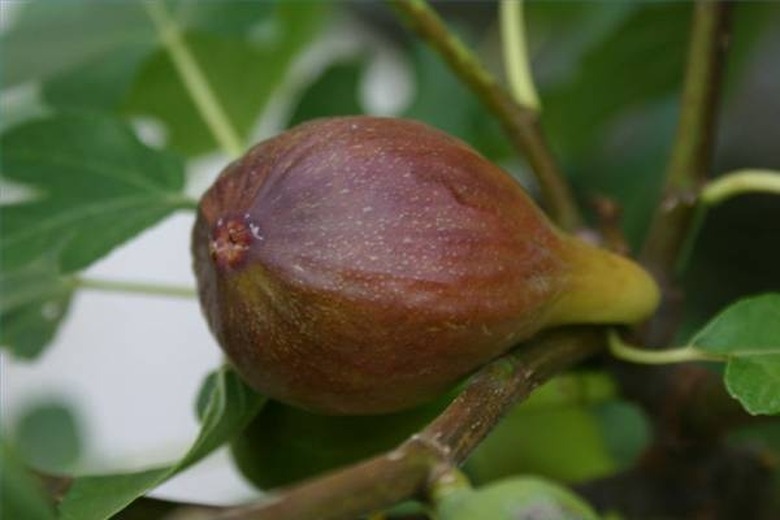How To Transplant Fig Trees
Things Needed
- Fig tree
- Pruning shears
- Shovel
- Excavator (for very large mature trees)
- Burlap and rope
- Water
Available in several types and many varietals, fig trees are actually perennial fruiting shrubs. They thrive in full sun, particularly morning sun, and rich well-drained soil that is moist but never consistently wet. While fig trees benefit from fertilizer, you should wait a least a month after transplanting before fertilizing. Transplanting should take place in the fall, well before frost, or just as winter dormancy breaks. For very large or mature fig trees, an extra pair of hands will be useful.
Step 1
Prune the tree, removing up to one-third of its foliage, in preparation for transplanting. Called "heading back," this reduces stress on the tree and roots by reducing water loss through the foliage.
- Available in several types and many varietals, fig trees are actually perennial fruiting shrubs.
Step 2
Dig out the fig tree very carefully in order to not damage the root system. Start trenching in a circle at least four feet out from the trunk with a shovel. Dig down until you can get under the bulk of the root ball and use a shovel or shovels as levers to lift the tree up and out of its hole. For very large or mature Fig trees, a mechanical excavator may be required to lift the tree out of the hole.
Step 3
Set the extricated root ball down on several layers of burlap fabric large enough to wrap around the entire root ball and be tied at the trunk with rope to secure. Water the burlap and root ball down so that it does not dry out during transport or while the new location is readied.
Step 4
Dig a new hole in a sunny location with well-drained soil. The hole should be at least twice the size and depth of the tree's root ball or container in which it resides. If the soil at the bottom of the newly dug hole isn't moist, water it well.
- Dig out the fig tree very carefully in order to not damage the root system.
- Dig down until you can get under the bulk of the root ball and use a shovel or shovels as levers to lift the tree up and out of its hole.
Step 5
Place the fig tree into the hole so that the top of the tree's root ball rests two to four inches below the level of the surrounding soil. This is somewhat unique to fig trees and is something you would never do with most plants.
Step 6
Back fill the displaced soil and tamp down around the root ball firmly to ensure good soil to root contact. Water the fig well, filling in additional soil as needed to fill collapsed air pockets. Keep the soil uniformly moist an inch or two down into the soil, but not overly wet.
